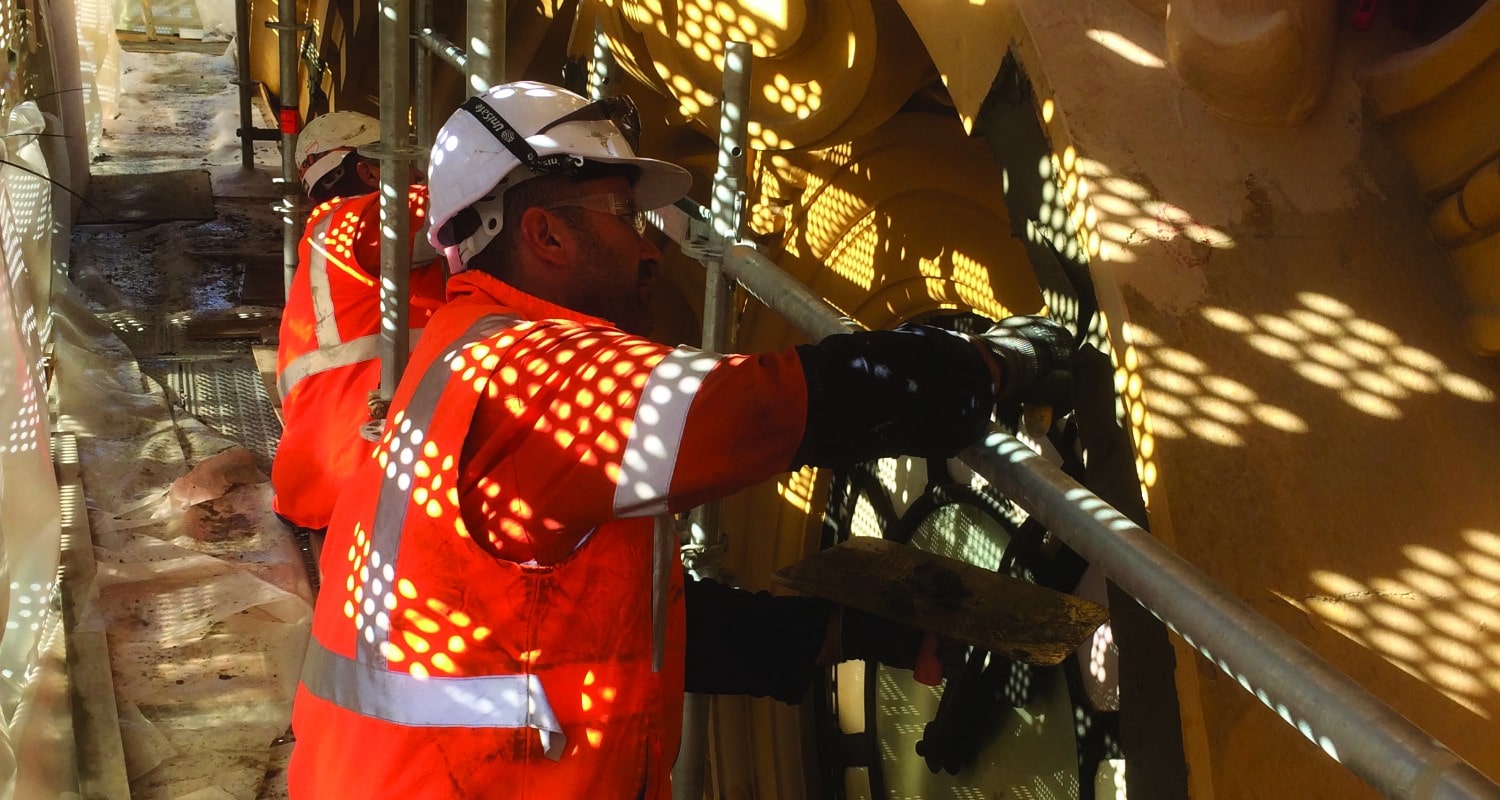Concrete is one of the most utilised and durable materials in human history. Its inherent advantages of strength, fire resistance, and lower cost come with one distinct disadvantage: permanency. That is right. It is there almost forever. This presents an issue should the design, pour, workmanship, or materials be substandard.
For a long time, the only way to truly access inside concrete was via mechanical demolition. For some problems, it is still the only way. But thanks to advancements in technology. Some of these issues can be remedied without such invasive techniques.
By definition, concrete remediation is all about fixing issues with concrete. Many ways can compromise the integrity of this amazing construction product. The resultant symptoms can manifest like so: internal structural issues, external damage, aesthetic issues, and more. Unfortunately, there is no one fix for all concrete issues. They all require a different approach. Determining that approach is dictated by the underlying issue, to begin with.
There is almost an infinite combination of issues, causes, environmental factors, and repairs. Because of that, this article will cover situations that the concrete remediation industry frequently encounters with.
Common issues and their causes
As we have mentioned, concrete issues can be structural, non-structural, or aesthetic. There is a number of causes ranging from lacklustre design to poor construction materials and workmanship to chemical and fire damage to overloading and much more. Some of our most frequently encountered issues are:
Concrete cancer
This is an Alkali-Silica Reaction as a result of a hygroscopic catalyst. In most of these cases, water or other moisture has leached inside the concrete structure. It then began a destructive chain reaction. Most of the time corroding steel reinforcement is the issue. Rust swells as time goes on and with nowhere to go it splits the slab, causing cracking. And, eventually – total collapse.
Chemical damage
It can be accidental or a by-product of regular business practices. Inadvertent chemical spills can cause permanent damage to concrete and other hardened masonry surfaces. Similarly, regular contact with products such as petroleum or acids can cause long-term permanent damage. Businesses like chemical manufacturing facilities face this issue.
Structural damage
From ground settlement to tectonic movement, extreme temperature ranges to poor de-shuttering practices. These are all common causes of structural damage to concrete. The result can be as minor as hairline cracks that are aesthetically displeasing to unexpected collapse.
Fire/blast damage
Concrete doesn’t burn per se, but the air trapped inside it does. If the fire burns hot enough, the air in those tiny bubbles is superheated. So, it results in a massive expansion. Each pocket of air becomes a miniature bomb with chaotic results.
Joint Failure
Due to the requisite expansive and contractive properties of concrete, expansion joints are built into any design of significant volume. Over time, these joints can fail or even collapse into themselves. It results in broken concrete, dust, uneven surfaces, access by external contaminants, and more.
Waterproofing
In construction that maintains a water barrier, specialised product installation helps to hold water out – or in. Misuse, incorrect materials, or poor attention to detail can mean expensive reworks.
Rendering
Despite adding almost zero structural value, getting rendered right is critical to the aesthetics of a building. Poor preparation, lacklustre workmanship and lesser/incorrect products can all account for cracking or crumbling cement render.
Human error
A poor design that doesn’t allow for proper curing or enough materials is a kind of human error. Also, poor workmanship during the pour can be at fault. Perhaps the mix wasn’t vibrated enough, causing excessive air pockets.
It can also be a combination of these faults.
Repair methods
Every concrete remediation repair scenario requires a unique approach. Not just because the causes are different but because the physical environment of every site is different. Repairing chemical damage at a service station in Darwin will need a vastly different method than repairing chemical damage at a metal plating facility in Hobart. In truth, almost every case of damaged concrete will need its own site visit and thorough assessment.
To provide the best repair solution, a concrete remediation specialist will need to know:
- The purpose of the building.
- Where the damage is located in the building and if it is structural, non-structural, or aesthetic. Also if the damaged section is necessary to the function of the building.
- If the building is inhabited and how often.
- Is the concrete polished or not.
- Whether the lay of the land is around the building or not and has this caused the damage or merely added to it.
- How close the water table is and what saline content it is.
- If there are any chemical leaks nearby that may be a catalyst.
- If the building is close to or within range of sea or estuarine air or water.
- How long the damage has occurred.
- If proper construction practices were used? If yes, did the original builder know of the potential issues? If yes again, were proper measures taken to avoid any damage?
- What the intended use of the building is for the near, mid, and long-term future.
- Any known external constraints to remedial works, ie. council regulations, heritage concerns, hazmat disturbance, the structure’s physical location, and orientation in situ.
- If the building insured and if yes, is it insured against this type of damage?
Part Two of this series will delve into the repair methods themselves.
For more information on our services, take a look at our webpage or request a free quote.
contact us today
